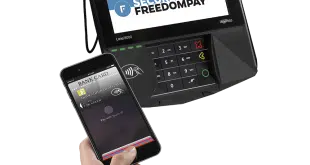The prospect of combining on one contactless card payments for parking and transit fares would seem like a winner for hundreds of thousands of commuters who drive each morning to transit parking lots and then hop on a train or bus to the office. That was one idea floated last week at a session about innovations in transit and parking payments at a Smart Card Alliance conference in Salt Lake City.
A hot topic at the SCA’s Mobile and Transit Payments Summit was replacing costly proprietary transit fare cards with so-called open-fare contactless bank cards such as MasterCard Inc.’s PayPass or Visa Inc.’s payWave.
One of the session speakers, Peter Burrows, vice president of product development at parking payment technology provider Parkeon Inc., agrees that a marriage of parking and transit fare payments on one card is a good idea. It has been done in some places in Europe, he says, and American transit officials are at least mulling the idea.
“The parking cards that we see issued nowadays in cities are only for parking, they don’t cross into the transit realm, but we’ve certainly had discussions with transit agencies to take their cards in parking machines,” Burrows says.
But in U.S. mass transit, where magnetic-stripe fare cards co-exist with proprietary smart cards, paper monthly passes, and cash, many obstacles stand in the way, not the least of which is the slowness with which agencies change their fare technology. Transit officials are concentrating mostly on just their end of things, not combo contactless parking-transit cards. “Right now the demand is not high,” says Burrows.
But one of the reasons open-fare transit payments, with or without parking functionality, are getting a lot of attention now is that the proprietary systems many transit agencies began installing in the early 1990s are wearing out. The Metropolitan Transportation Authority in New York City wants to implement an open-fare system, and other big agencies are taking steps in that direction, too. As agencies replace these old systems, new possibilities emerge as technologies such as contactless cards and even mobile payments from smart phones become more feasible. Some day such an option might include cards and mobile phones equipped with high-function near-field communication (NFC) chips.
While contactless combo parking and transit cards may be some time off, Parkeon and other companies in the electronic parking-payment industry are still finding plenty of opportunities in their core business. Moorestown, N.J.-based Parkeon says it surveyed eight cities that offer a prepaid smart card for parking and found that coins still dominated payments, with a 58% share. Credit cards accounted for 25% of payments, smart cards 8%, and other methods, 9%.
Parkeon, a multinational former subsidiary of Schlumberger, brought the first parking meters equipped to process online credit card authorizations to the U.S., in Seattle about seven years ago. Now it has an installed base of 14,000 pay stations for more than 200 clients, about 120 of which are municipalities. Besides Seattle, other big cities using Parkeon systems include New York City, Atlanta, Washington, D.C., and New Orleans.
Parkeon’s wireless, solar-powered machines also accept coins and bills and cost up to $10,000, but, according to Burrows, they quickly start generating a lot of revenue. Per-space revenues can go up by as much as 40% when a card-accepting kiosk that manages multiple spaces replaces single-space coin meters. One reason is that people who are short on cash but need to park don’t have to skip payment and hope to leave before the meter maid comes around. “Compliance goes up because they can pay, and secondly they pay for much longer parking periods, because they can,” Burrows says. In a typical “pay-and-display” arrangement, parkers get a receipt from the kiosk and display it on their dashboards.
Parkeon, which originally used Mobitex technology to transmit card data to its servers, now mostly uses GPRS (General Packet Radio Service) telecommunications. In the U.S., its machines don’t read contactless cards but can be upgraded to read them. Burrows wouldn’t reveal the exact cost but says, “It would certainly be a fraction of the cost of new machines.”
In New York, the city government has issued about 5 million contact smart cards primarily used in commercial vehicles for parking in loading zones and other commercial areas. Parkeon equipment accepts them. The city plans to buy 5 million more such cards.
Meanwhile, about 25 U.S. cities offer some form of a mobile-payment parking option, with the parker typically calling a voice-response unit to register his license plate and location. Verrus Mobile Technologies Inc. announced last April that Washington, D.C., would test such a system in some neighborhoods.




